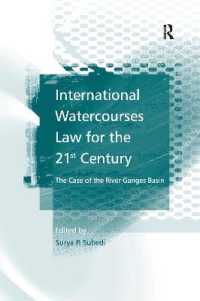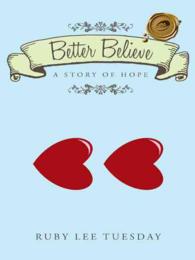- ホーム
- > 洋書
- > 英文書
- > Literary Criticism
Full Description
Laura Ingalls Wilder, author of the well-known Little House series, wrote stories from her childhood because they were "too good to be altogether lost." And those stories seemed far from being lost during the remainder of her lifetime and through most of the twentieth century. They were translated into dozens of languages; generations of children read them at school; and dedicated readers made pilgrimages to the settings of the Little House books. With the release of NBC's Little House on the Prairie series in 1974, Wilder was well on her way to becoming an international literary superstar. Simultaneously, however, the novels themselves began to slip from view, replaced by an onslaught of assumptions and questions about Wilder's values and politics and even about the books' authenticity. From the 1980s, a slow but steady critical crescendo began to erode Wilder's literary reputation.
In Too Good to Be Altogether Lost, Wilder expert Pamela Smith Hill dives back into the Little House books, closely examining Wilder's text, her characters, and their stories. Hill reveals that these gritty, emotionally complex novels depict a realistic coming of age for a girl in the American West. This realism in Wilder's novels, once perceived as a fatal flaw, can lead to essential discussions not only about the past but about the present-and the underlying racism young people encounter when reading today. Hill's fresh approach to Wilder's books, including surprising revelations about Wilder's novel The First Four Years, shows how this author forever changed the literary landscape of children's and young adult literature in ways that remain vital and relevant today.
Contents
List of Illustrations
Preface
Acknowledgments
1. Ambition: Sustaining a Dream
2. Pioneer Girl: Literary Mother Lode
3. "When Grandma Was a Little Girl": A Little House Prelude
4. Little House in the Big Woods: Once Upon a Time
5. Farmer Boy: Mirror Image
6. Little House on the Prairie, Part One: A Series Is Born
7. Little House on the Prairie, Part Two: The Rise and Fall of a Children's Classic
8. On the Banks of Plum Creek: The Model for a Perfect Juvenile
9. By the Shores of Silver Lake: A Creative Leap of Faith
10. The Long Winter, Part One: Imaginative Iron
11. The Long Winter, Part Two: A Sustained Artistic Force
12. Little Town on the Prairie: A Classic Coming-of-Age Novel
13. These Happy Golden Years, Part One: A Knife in the Dark
14. These Happy Golden Years, Part Two: A Happy Ending
15. The First Four Years: Unraveling a Literary Mystery
A Note on Sources
Notes
Bibliography
Index








